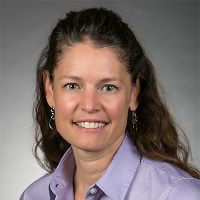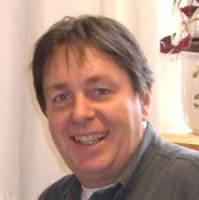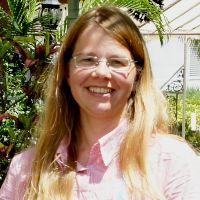USH1C Research
Gene: USH1C
Year Identified: 2000
Each research project listed below will include a graphic of the research continuum. The gold box indicates where this project falls on the continuum, illustrating its progress towards reaching people living with Usher syndrome, from "Bench to Bedside."
Click here to learn more about the different stages in the research continuum.
Gene Therapy USH1C


Gwenaëlle Géléoc, Ph.D.:
Boston Children's Hospital
Géléoc and her team at Boston Children's Hospital were able to restore hearing and the vestibular system in a mouse model with USH1C by introducing a healthy copy of the protein Harmonin with the help of an AAV vector.
Dr. Gwenaëlle Géléoc's Lab Page
Watch the USH Talk About Gene Therapy for USH1C
Link to Relevant Publication
Rescue of hearing and vestibular function in a mouse model


Jennifer Lentz, Ph.D.:
Louisiana State University Health Sciences Center New Orleans
Lentz has shown that through a different approach, Antisense oligonucleotide (ASO or AON) treatment of mice with the human Usher mutation USH1C corrects gene expression and significantly improves hearing. Lentz compares this to the skipping of the entire exon 3, which could be used on multiple USH1C mutations, to smaller sequence directed for 216 mutation. Additionally, she is conducting a natural history study of vision loss on patients with USH1C.
Link to Relevant Publication
Link to Relevant Publication
Recruiting for USH1C Natural History Study
Studies being conducted by Dr. Lentz and her team include:
- Usher Syndrome in Louisiana Natural History Study
- Prospective Natural Study of Vision Loss in USH 1C: A Multicenter Study
- Prospective Natural History Study of the Loss of Balance in USH 1C
For more information about these special opportunities:
Create a Nonhuman Pig Model of USH1C



Kerstin Nagel-Wolfrum, Ph.D. and Uwe Wolfrum, Ph.D.:
Kerstin and Uwe Wolfrum and their teams have developed a transgenic USH1C pig model and investigated translational read-through inducing drugs in mouse and pig models with USH1C (p.R31X). This approach could serve as a treatment option for nonsense mutations in inherited retinal diseases.
Wolfrum Lab Page
Unraveling the retinal function of harmonin - USH1C



Kerstin Nagel-Wolfrum, Ph.D. and Uwe Wolfrum, Ph.D.:
The USH1C/harmonin is a scaffold protein consisting of one harmonin homology, three PDZ, coiled-coil, and one proline-serine-threonine-rich (PST) domain through which numerous proteins including all other USH proteins bind. Extensive alternative splicing modulates harmonin´s modular composition and thus its molecular function in the cell. In the retina, specific harmonin isoforms are expressed in the photoreceptor cells and Müller glia cells where they are localized in the photosensitive outer segments, calyceal processes, synapses and in adhesions complexes, respectively. The researchers study harmonin´s functions in vitro and in cells, e.g., cells derived from patients or animal models and in vivo in our USH1C pig model.
USH1C-Related Science News
The USH1C gene encodes the protein harmonin which organizes protein networks in the retina and inner ear.
The researchers conducting this study aimed to develop a new animal model of Usher syndrome using pigs because pig eyes are more similar to human eyes compared with other small animal models like mice or fish.
Usher syndrome (USH) is the most common form of genetic deaf-blindness. Thus far there are no treatments for vision loss. Researchers were able to create a pig model for USH1C by introducing a human mutation into the USH1C gene in pigs. This successfully created an animal model with the hearing defect, vestibular dysfunction, and visual impairment found in USH. The primary cell isolated from these pig models and USH1C patients show elongated primary cilia compared to primary cells with no USH mutations. This finding confirms USH as a genetic disorder that affects cilia. The research also proves that there can be therapeutic benefits in gene supplementation and gene repair therapies.
What this means for Usher syndrome: Researchers have now confirmed that USH is a genetic disorder affecting cilia. Knowing this enables possible therapies like gene supplementation and gene repair.
Usher syndrome (USH) is the most common cause of inherited deaf-blindness. Currently there is no therapy for vision loss caused by USH. Rodents have been used as animal models for USH but even with defects in their USH genes, they do not often exhibit the vision loss humans experience. The lack of animal models that share human characteristics of USH makes it difficult to study the protein and any possible therapeutic interventions. In this study, researchers were able to modify the USH1C gene in pigs. They did this by copying the human USH1C gene with the mutation using bacterial recombineering into the pig genome. Through this, researchers were able to create USH1C piglets that are born deaf and have vestibular dysfunctions. Behavioral tests also showed a reduction in vision. This is the first time researchers have created a large animal model for USH1.
What this means for Usher syndrome: Researchers now have a functioning animal model of USH1C that they can use to study the USH1C gene and possible therapies. This allows further research to be conducted for cures for USH.
Bifeng Pan, Charles Askew, Alice Galvin, Selena Heman-Ackah, Yukako Asai, Artur A Indzhykulian, Francine M Jodelka, Michelle L Hastings, Jennifer J Lentz, Luk H Vandenberghe, Jeffrey R Holt& Gwenaëlle S Géléoc.
Working with a mouse model of a human mutation, Dr. Gwen Géléoc and colleagues delivered a normal copy of the USH1C gene to the inner ear soon after the mice were born, which led to robust improvements enabling profoundly deaf and dizzy mice to hear sounds at the level of whispers and recover proper balance function.
Dr. Gwen Géléoc shares exciting news on progress made towards gene therapy for USH1C. Working with a mouse model of a human mutation, Dr. Géléoc and colleagues delivered a normal copy of the USH1C gene to the inner ear soon after the mice were born, which led to robust improvements enabling profoundly deaf and dizzy mice to hear sounds at the level of whispers and recover proper balance function. Dr. Géléoc is cautiously optimistic that successes in the lab will someday lead to novel therapeutic approaches in the clinic.
João Carlos Ribeiro, Bárbara Oliveiros, Paulo Pereira, Natália António, Thomas Hummel, António Paiva & Eduardo D. Silva
Study aimed at identifying and characterizing putative differences in olfactory capacity between patients with USH and controls, as well as among the subtypes of USH.
Hidekane Yoshimura, Maiko Miyagawa, Kozo Kumakawa, Shin-ya Nishio, and Shin-ichi Usami.
This first report describing the frequency (1.3–2.2%) of USH1 among non-syndromic deaf children highlights the importance of comprehensive genetic testing for early disease diagnosis.
A couple of new stories/updates that will probably be of interest to our readers.
Today was an 11-hour maelstrom* of really good science. Of all the great research stories I heard, there are several that will likely be of interest to our readers:
New treatment for nonsense mutations may soon be ready for use in Usher syndrome patients. A molecule known as PTC124 appears to cause the stop signal in a mutated USH1C to be ignored, allowing the protein to be formed normally in cell cultures.
Today's cool Usher science story comes from Kate McCaffrey and colleagues at Rosalind Franklin University, who are making some interesting discoveries about a new potential therapy for Usher type 1C.
This 2010 review dives into the genetics of pathological mechanisms of Usher syndrome.
What this means for Usher syndrome: Research has come a long way since 2010!









